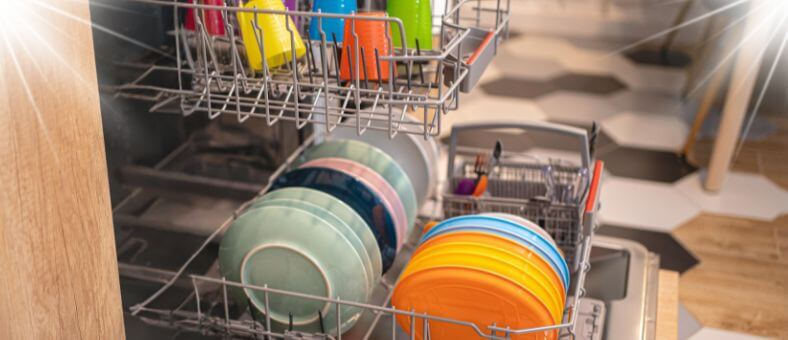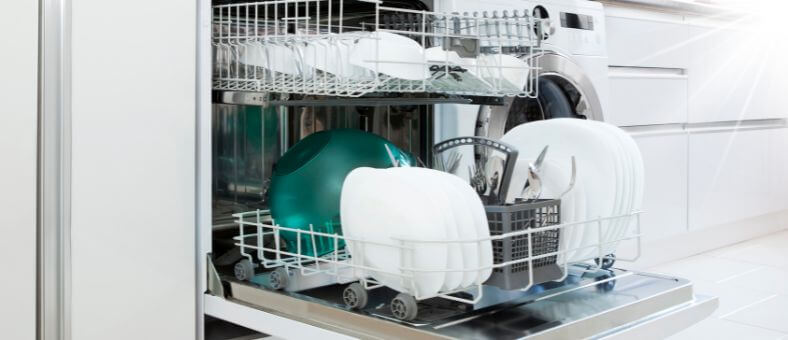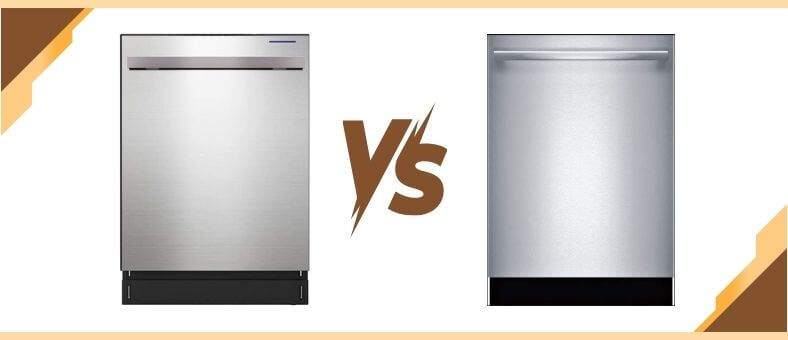Ever looked at a brand-new, gleaming dishwasher and thought, “How on earth do I get started?” If it’s your first time using a dishwasher, that mix of anticipation and curiosity is all too familiar. It’s like being handed a shiny new gadget without the manual—exciting yet slightly overwhelming!
Welcome to “First Time Using a Dishwasher? The Ultimate Beginner’s Guide!” With this guide, you’ll no longer face those post-meal dishwashing blues. Instead, you’ll be equipped with the knowledge to harness the full potential of your dishwasher, ensuring spotlessly clean dishes every time. So, are you ready to swap out that scrubbing brush for a simple button push? Dive in, discover the ease, and let’s transform your kitchen experience together!
Time-Saving Wonders
You could save up to 230 hours annually using a dishwasher instead of handwashing, which averages about 1 hour daily. That’s almost ten whole days reclaimed in a year!
Table of Contents
#1. Ensure Power and Water Are Off
Before you get started with anything, safety first! Double-check that the dishwasher’s power is turned off, and the water supply to the unit is closed. This preliminary step is crucial not just for safety but also to ensure the smooth operation of your machine. Think of it as setting the stage before the main performance.
#2. Dive into the User Manual
While every dishwasher might look similar, their functionalities can differ. The user manual is your treasure map, leading you to understand your specific machine. It details functions, settings, and gives you a breakdown of what every button does. Spending a few minutes with the manual now can save you hours of confusion later.
#3. Initiate an Empty Wash Cycle
Before you load up those dirty dishes, run an empty wash cycle. Why, you ask? This ensures that the dishwasher is clean from any residual manufacturing chemicals and gives you a dry run (pun intended) of how the machine works. It’s like letting your car idle a bit before a drive.
#4. Mastering the Art of Loading
Loading a dishwasher is more than just stacking dishes. To get the best results, you need to master the art! Plates typically go on the bottom rack, facing the center, while glasses, mugs, and smaller items belong on the top. Be careful not to overcrowd, as dishes need space for water to circulate. And remember, those dirtier dishes might need a pre-rinse before going in.
#5. Measuring the Right Detergent Amount
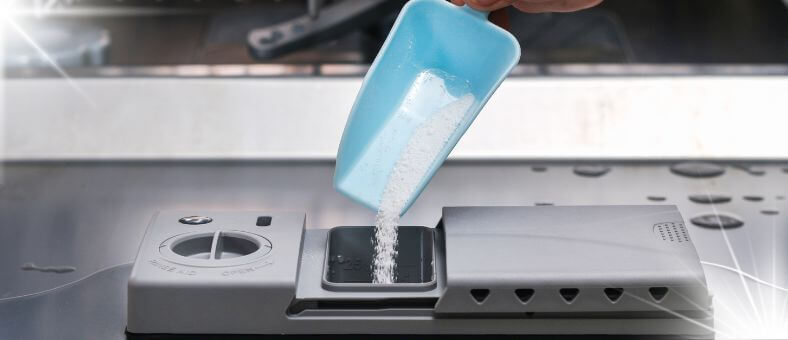
While it’s tempting to think that more detergent equals cleaner dishes, that’s not always the case. Overloading can leave residues, while too little might not clean effectively. Check your user manual for the recommended amount. If in doubt, start with a smaller amount and consider exploring What is the Best Dishwasher Detergent to ensure you’re using a top-tier product. Over time, you’ll get a feel for just the right quantity for squeaky-clean dishes.
Essential Tips for New Dishwasher Owners
#1. Assess Your Water Hardness
Water isn’t just water. Depending on where you live, it might have different minerals, making it “hard” or “soft.” Why does this matter? Hard water can leave spots and residue on dishes. Some dishwashers have settings to adjust for this, while others might need special detergents or softeners. A quick check with your local water department or a home test kit can help determine your water’s hardness. If you suspect you have hard water issues, delve into Dishwasher Problems Caused by Hard Water to gain more insights and possible solutions.
#2. The Benefits of Rinse Aid
Have you ever noticed water spots on your glasses or dishes not drying properly? Enter rinse aid. It’s a magical solution that helps water slide off dishes, ensuring they dry spot-free and gleaming. A rinse aid can be beneficial in an area with hard water. Fill up the designated compartment in your dishwasher and let it work its magic!
#3. Maintain with a Handy Checklist
Like any appliance, your dishwasher loves a little TLC. Monthly checks can help keep it running smoothly. Clear out the food trap, check the spinning arms for clogs, and wipe down the door seals. Every few months, consider running an empty cycle with a dishwasher cleaner. A small maintenance checklist can prolong the life of your machine and ensure it’s always ready for action.
#4. Know How to Reset Your Machine
Every now and then, tech does go haywire. Maybe the buttons aren’t responding, or perhaps there’s an odd light flashing. Before calling in the cavalry (or the repair person), know how to reset your machine. Often, it’s as simple as holding down a couple of buttons or unplugging the unit. Your user manual will have the specifics for your model.
Common Dishwasher Mistakes for Beginners
Your first time using a dishwasher could be thrilling. However, as with any new adventure, there can be a few hiccups. To make your experience smoother, let’s highlight some common mistakes beginners often make and how you can sidestep them:
Overloading the Dishwasher
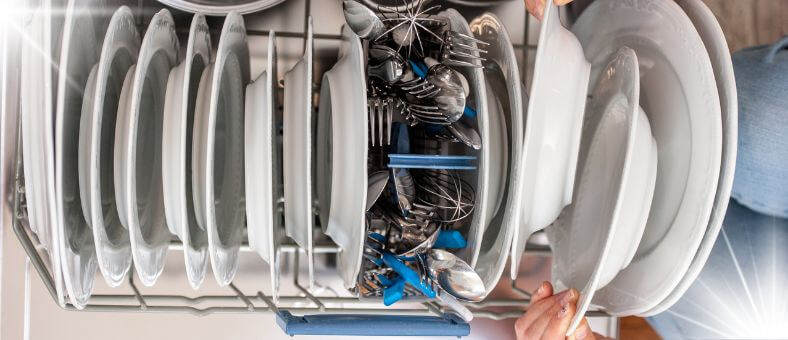
Are you eager to get all those dishes cleaned in one go? We get it. But cramming in too many dishes can block the water spray, leaving some dishes dirty. Always ensure there’s enough space between items for water to circulate freely.
Overloading Oversights: The Importance of Space
Properly spacing dishes is crucial for effective cleaning. Overloading prevents water from circulating properly, often leaving dishes dirty even after a full cycle.
Placing Dishes Haphazardly
There’s an art to loading a dishwasher. For instance, placing cups and glasses on the bottom rack or large utensils blocking the spray arm can affect cleaning. Always follow the recommended loading pattern for optimal results, especially when it is your first time using a dishwasher.
Skipping the Rinse
While modern dishwashers are powerful, leaving large chunks of food on dishes can clog the drain over time. A quick rinse before loading can go a long way.
Using the Wrong Detergent
Not all cleaning agents are suitable for dishwashers. Using regular dish soap can lead to an overflow of suds. Always use detergents specifically designed for dishwasher use. If you’re feeling crafty and looking for a natural alternative, check out this Easy Guide to Homemade Dishwasher Detergent for recipes and tips!
Ignoring Regular Maintenance
The dishwasher is a workhorse but needs regular TLC. Neglecting to clean the filter or checking the spray arms for clogs can impact its efficiency.
Not Using Rinse Aid
If you’re noticing spots on your glassware, it might be because you’re skipping the rinse aid. This nifty solution helps in better drying and spot-free dishes.
Forgetting the Salt in Hard Water Areas
If you live in a hard water area, using special dishwasher salt can prevent limescale build-up, ensuring cleaner dishes and a longer appliance life.
Ignoring the User Manual
Your dishwasher’s manual is more than just a thick booklet to be tossed in a drawer. It’s a treasure trove of tips, tricks, and maintenance advice tailored to your machine.
Quick Fixes for Common Issues
Stepping into the world of automated kitchen helpers like dishwashers can be thrilling. But sometimes, even these advanced gadgets can hiccup. Luckily, many common issues have straightforward solutions. Here’s a quick guide to help you navigate two frequent challenges without breaking a sweat.
#1. Dishwasher Doesn’t Start: Basic Checks
Encountering issues with your dishwasher not starting? Before diving deep, it might be worth consulting the How to Fix a Dishwasher, Troubleshooting and Repair guide. But first, let’s tackle some common causes right here:
Power Connection
It might sound silly, but sometimes we overlook the obvious. Ensure your dishwasher is properly plugged in. For an added layer of checking, plug another device into the socket to ensure it’s functional.
Door Seal
If your dishwasher isn’t starting, the door might not be sealing correctly. A good nudge might do the trick, but if it’s not latching, there could be obstructions or damage. For more insights on this, check out Dishwasher Door Unlocking During A Cycle.
Child Lock or Control Lock
Some models come with safety locks to prevent accidental starts. Check to ensure you haven’t accidentally activated this feature.
#2. Dishes Still Dirty After Wash
It’s a tad frustrating, isn’t it? You open the door, expecting gleaming dishes, but they’re still grimy. Let’s decode the possible reasons:
Loading Strategy
Your dishwasher needs space to do its job. Overloading or stacking dishes haphazardly can prevent water from reaching every nook and cranny. Review your loading strategy and give dishes some room to breathe.
Spray Arm & Filter
A clogged spray arm or filter can often be the culprit. They’re the heart of cleaning, ensuring water is circulated effectively. Regularly check and clean them to prevent blockages.
Quality of Detergent
Not all detergents are created equal. Ensure you’re using a good quality detergent that hasn’t clumped due to moisture.
#3. Detergent Remains in the Dispenser
Ah, the lingering detergent issue! It’s like setting up a tea bag and then realizing the water never touched it. When detergent sticks around post-wash, a few culprits might be at play:
Old Detergent
If your detergent has been sitting on the shelf for eons, it might have lost its effectiveness and could clump. Freshen up your supply and store it in a cool, dry place.
Dispenser Clog
Ensure the detergent dispenser isn’t clogged. Over time, remnants might build up, preventing a full release during cycles.
Dish Loading
An improperly loaded dishwasher can block the detergent door from opening. Be mindful of where large dishes are placed relative to the dispenser.
#4. Dishwasher Making Strange Noises
Dishwashers are generally quiet companions. But when they start humming a different tune, it’s time to listen closely:
Trapped Items
Sometimes, small items like bones or glass pieces can get trapped in the spray arm or bottom of the dishwasher, leading to weird sounds. Regularly inspect and clear out any obstructions.
Motor Issues
If the noise sounds mechanical, it might be the motor or pump. These could require professional attention.
Water Pressure
A soft “swooshing” sound is normal but loud, forceful noises could indicate water pressure issues. Check your home’s water pressure or consult a technician.
#5. Water Not Draining Properly
A pool party at the dishwasher’s base? That’s not where we want the water to stay:
Check the Filter & Drain
Debris and food particles can sometimes play spoilsport, clogging up the filter or drain and stopping the water from heading out. If you’re unsure about how to handle it, our guide on 8 Easy Steps to Fix a Non-Draining Dishwasher might come in handy. A simple cleaning often solves this issue.
Drain Hose
Ensure that the hose isn’t kinked or bent. This can prevent water from draining out.
Garbage Disposal
If your dishwasher drains through a garbage disposal, ensure it’s clear of debris. Sometimes, a newly installed garbage disposal might have a plug left in that needs to be removed.
The Green Side of Using a Dishwasher
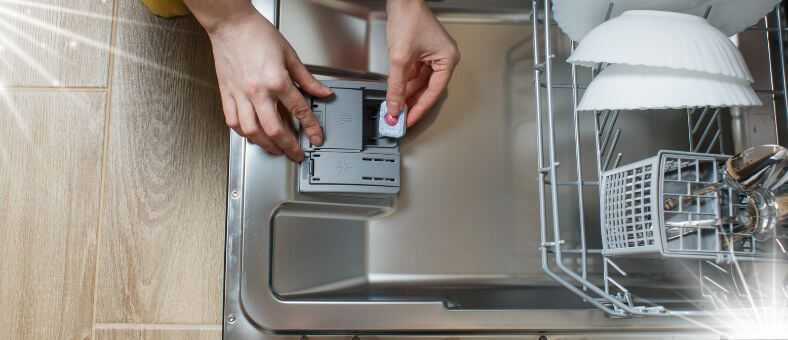
Ever thought of your humble dishwasher as an eco-warrior? Well, it might be time to see it in a new light. Beyond just scrubbing off the grease from last night’s dinner, modern dishwashers have some pretty nifty green credentials. Let’s explore!
#1. Energy and Water Consumption Facts
First things first, let’s demystify a common misconception. Many folks believe that hand-washing dishes is more eco-friendly than using a dishwasher. But here’s a fun fact: Modern dishwashers can use as little as 3 gallons of water for a full load, while hand washing the same amount can take up to 27 gallons! Want to delve deeper into these numbers? Check out How Much Water Do Dishwashers Use? for a comprehensive breakdown. Mind blown, right? Additionally, dishwashers heat only the water they use, while your water heater has to work overtime when you wash by hand. So, not only does the machine save water, but it also optimizes energy consumption.
#2. ECO or Energy-Saving Modes
Seeing that “ECO” button and wondering what magic it holds? It’s not just there for show. The ECO or Energy-Saving modes on dishwashers adjust the water temperature and the washing cycle duration. They’re designed to clean your dishes thoroughly using the least water and electricity. Curious about the exact power consumption? Dive into the details with How Much Electricity Does A Dishwasher Use? The result? Spotless dishes, lower energy bills, and a happier planet. It’s like your dishwasher’s way of giving Mother Earth a gentle hug!
#3. Benefits of Running Full Loads
Have you ever been tempted to run your dishwasher when it’s only half-full because you need that one particular mug or plate? We’ve all been there. But here’s the scoop: Running full loads is not just an old wives’ tale—it’s greener and more efficient. When waiting for a full load, you maximize the water and energy per dish. The bonus? Fewer loads mean you reduce your machine’s wear and tear, leading to a longer lifespan. Think about the cumulative water and electricity savings over months and years. So, while it might test your patience, waiting for a full load is a win for your wallet, machine, and planet.
#4. Proper Maintenance for Efficiency
Proper maintenance ensures the dishwasher runs at its peak efficiency, using the least resources. Plus, it helps tackle any unwanted odors. Remember, a happy dishwasher equals happy dishes, which translates to happy you. And the cherry on top? Regular upkeep means fewer breakdowns and repairs. So, give your dishwasher the TLC it deserves, and it’ll reward you with stellar, efficient performance day in and day out.
Concluding Your First Time Using a Dishwasher Adventure
Venturing into the world of dishwashers for the first time can feel like a mix of excitement and uncertainty. But with the insights and tips provided in this guide, you’re now well-equipped to master your new kitchen companion. Remember, like any journey, it’s about learning and adapting. Explore different settings and techniques to find what’s best for you. As you become more familiar with your dishwasher, you’ll find it not only makes your life easier but also adds a touch of eco-friendly efficiency to your daily routine. So, here’s to spotless dishes and more free time to enjoy the things you love! Dive in, and happy dishwashing!
Dishwasher Operation Basics: What You Need to Know

Stepping into the automated dish-cleaning world can seem overwhelming. But, with the right guide, you’ll navigate your dishwasher like a pro in no time. To kick things off, familiarize yourself with the Dishwasher Cycles and Settings – it’s your foundational step. From there, we’ll dive deeper into the essential operational elements of a dishwasher, ensuring you get the most out of your appliance.
Control Panel: Understanding Buttons and Cycles
The control panel is your dishwasher’s command center. From here, you can choose the type of wash, duration, and temperature. Each cycle is designed for different loads—some for heavy pots and pans, others for delicate glassware. Matching your load with the right cycle is crucial to ensure sparkling clean dishes.
Racks and Baskets: Where Your Dishes Sit
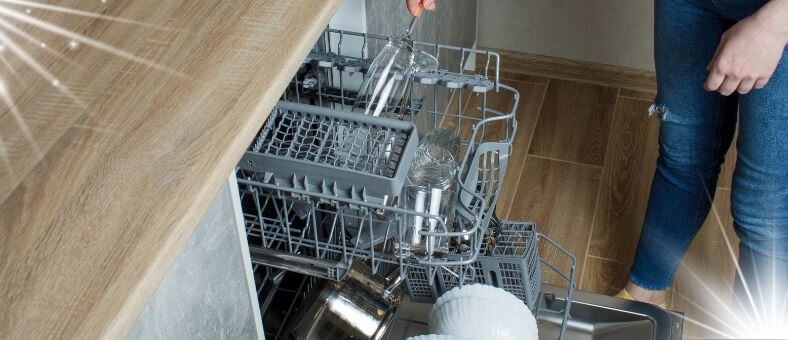
Every dishwasher has at least two primary sections—the upper and lower racks. Plates and larger items typically go in the bottom, while glasses and lighter items sit on top. Some models also have a cutlery basket. Properly organizing these spaces ensures efficient cleaning and reduces the risk of damage. However, it’s vital to be aware of items that might not be dishwasher safe. For a comprehensive list, check out 21 Things You Should Never Put in the Dishwasher. Being informed will help you maintain your appliance and your dishes in top-notch condition!
Spray Arms: The Heart of Cleaning
These spinning arms underneath the racks spray hot water and detergent onto the dishes. They need to move freely to work effectively. Ensure there aren’t any large pots or pans blocking their path. It’s good to occasionally check that they aren’t clogged with food particles.
Filters: Keeping the Clean Water Flowing
The filter system in a dishwasher prevents large debris from returning to your dishes. Most modern dishwashers have self-cleaning filters, but some models require manual cleaning. Regularly inspect and clean the filters to maintain optimal performance.
Detergent and Rinse Aid Compartments: Where the Magic Happens
Dishwasher detergent is specially formulated to work with the hot water in a dishwasher. Pour the recommended amount into the compartment before each wash. Rinse aids, on the other hand, help water slide off dishes, preventing water spots. A rinse aid is especially beneficial if you’re in an area with hard water.
The Standard Washing Cycle Explained
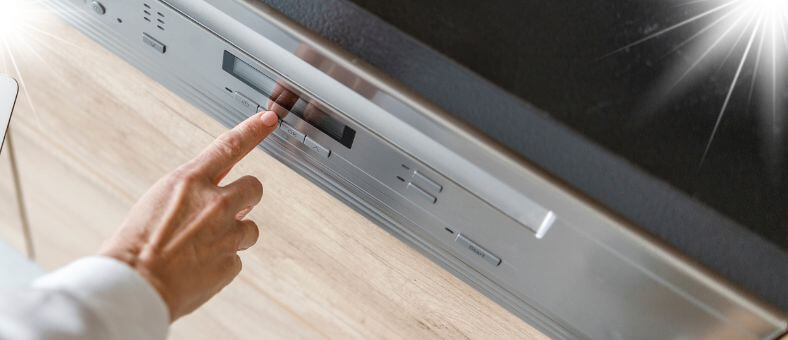
Operating a dishwasher isn’t just about pushing a button and hoping for the best. There’s a well-coordinated ballet happening behind that closed door—a systematic, multi-stage process designed to give you the cleanest dishes possible. So, let’s pull back the curtain on this dance and dive into the stages of a standard washing cycle.
Pre-wash: The Initial Rinse
Think of the pre-wash as the warm-up before the main event. In this phase, the dishwasher showers the dishes with water, loosening up leftover food particles and grease. This step is like a quick splash on your face before applying cleanser. It ensures the main wash can do its job more effectively by tackling the big chunks right out of the gate.
Main Wash: The Intensive Cleaning
Now, we’re in the thick of the action! The main wash is the dishwasher, using hot water mixed with detergent to remove all the stubborn stains and grime from your dishes. This phase is about giving your dishes a deep and thorough clean at high temperatures and with powerful water jets. Think of it as a spa treatment for your plates and glasses, where every ounce of dirt is meticulously scrubbed away.
Steamy Business: Hot Water for Hygiene
Dishwashers typically use water that’s at least 120°F (49°C). This high temperature ensures effective cleaning and sanitizes the dishes, killing germs and bacteria.
Rinses: Removing Detergent Residue
After a hearty clean, it’s time to rinse off. The dishwasher goes through one or more rinse cycles, using fresh water to wash away any remaining detergent residue. This stage ensures that your dishes aren’t just clean and safe from chemical remnants. After all, you don’t want your next meal to taste like soap, do you?
Drying: Ensuring Spotless Dishes
The grand finale! Once your dishes are cleaned and rinsed, it’s time to dry them off. Most dishwashers employ a heated drying mechanism, where warm air circulates, evaporating any leftover moisture. Some eco-friendly models might use a fan for this. The end result? Dishes that are not just clean but also dry, gleaming, and ready to grace your table again.
Additional Features and Their Roles
In the evolving world of home appliances, the dishwasher is no longer just a simple box that cleans dishes. Modern dishwashers have many features designed to provide convenience, save energy, and deliver a superior clean. Let’s examine some of these additional features and discover what they can do for you.
Delayed Start: Timing Your Washes
Have you ever wished your dishwasher could start on its own while you’re away or asleep? Enter the “Delayed Start” feature. This functionality allows you to set a timer for your dishwasher to start its cycle later, be it a few hours or even half a day. It’s perfect for running a cycle at night when electricity rates might be lower or for ensuring the noise doesn’t interfere with your daily activities. With this feature, you can truly set and forget!
Sanitize Mode: Extra Heat, Extra Clean
If you’re a stickler for hygiene or have little ones at home, you might be concerned about getting your dishes not just clean but sanitized. That’s where the “Sanitize Mode” steps in. By elevating the temperature beyond the typical washing heat, this mode ensures that 99.9% of bacteria and germs are eradicated from your dishes. It’s like giving your dishes extra protection, ensuring the utmost hygiene.
Eco Mode: Energy-Efficient Washing
In today’s eco-conscious world, reducing our carbon footprint and conserving energy is more important than ever. The “Eco Mode” on dishwashers is tailored for this very purpose. This mode uses less water and energy, adjusting the temperature and wash cycle duration to be more efficient. The result? Clean dishes with a minimal environmental impact. It’s a feature that not only benefits your wallet in terms of reduced utility bills but also gives the planet a much-needed breather.
Last Thoughts on Dishwasher Operations
Diving into Dishwasher Basics clarifies that dishwashers are designed for user convenience and efficiency. With a grasp of its features and cycles, you can transform dishwashing from a chore into an eco-friendly, streamlined task. Here’s to cleaner dishes with less fuss!
At WashDryDazzle, our primary goal is to equip you with invaluable knowledge to simplify your day-to-day tasks; to explore more, check out our central hub of Dishwasher Guides.



